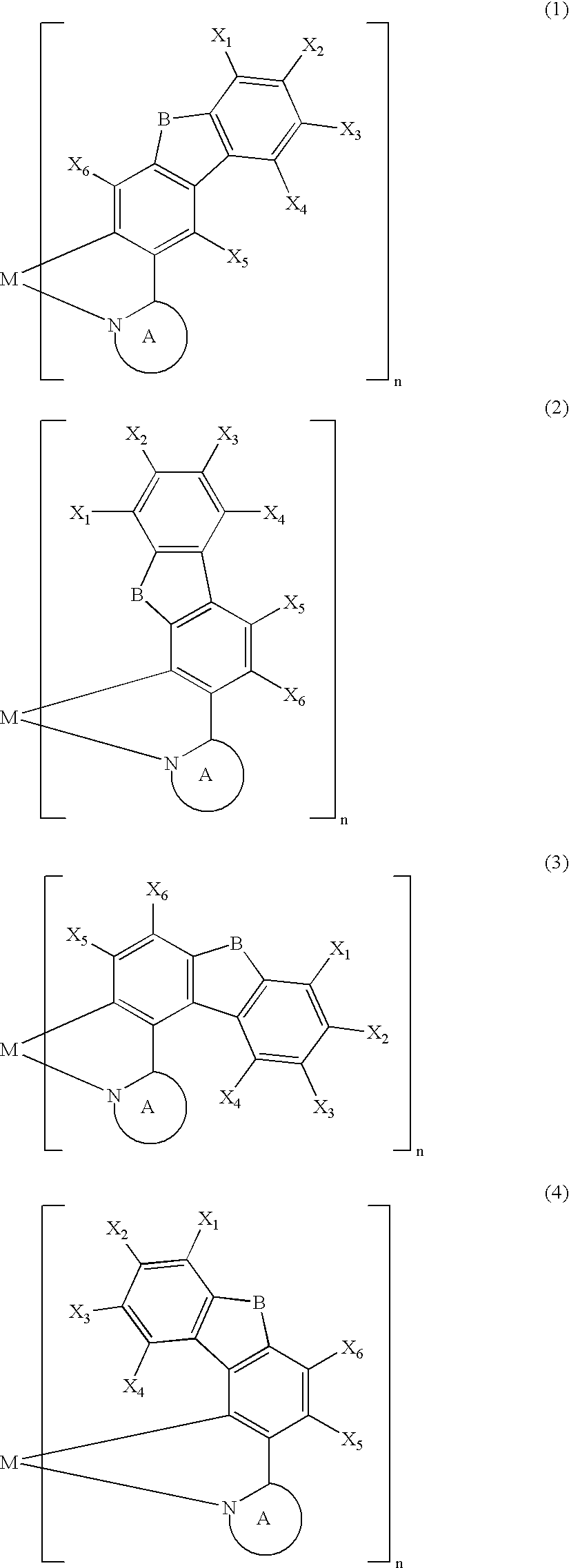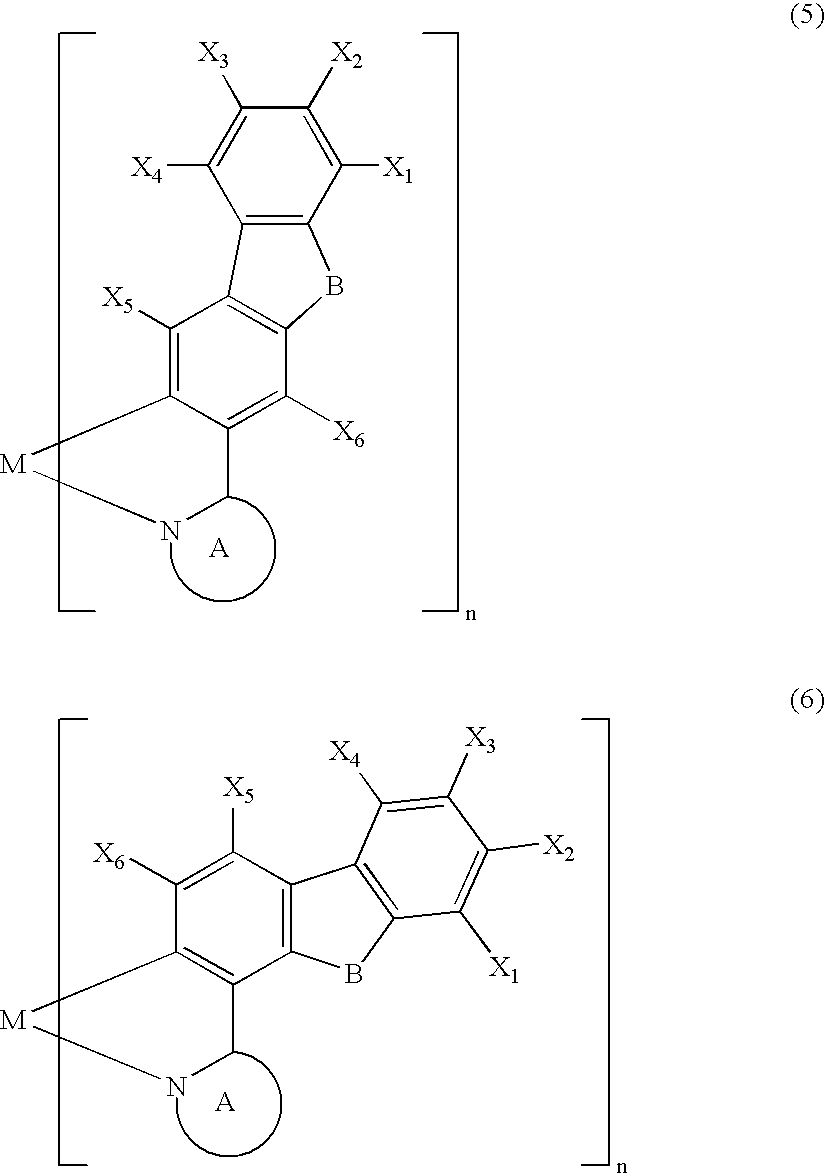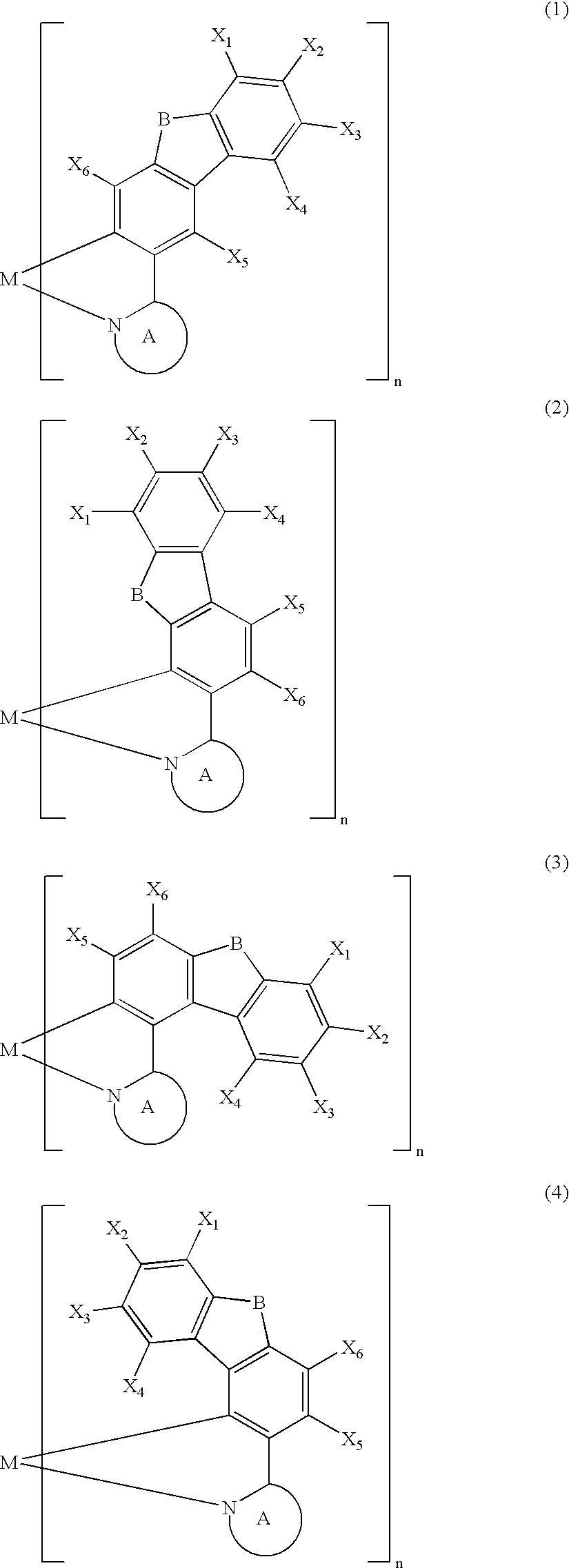Metal coordination compound, polymer composition, and organic electroluminescent device employing same
- Summary
- Abstract
- Description
- Claims
- Application Information
AI Technical Summary
Benefits of technology
Problems solved by technology
Method used
Image
Examples
examples
[0087] The present invention is explained below with reference to examples, but the present invention is not limited by these examples. It is also possible to obtain electroluminescent devices, other than the examples shown below, having excellent color purity, reliability, luminescence characteristics, etc. in cases where the above-mentioned various metal coordination compounds of the present invention are used.
example i-1
Synthesis of Metal Coordination Compound I-(1)
[0088] A Grignard reagent was prepared by gradually adding a THF solution of 3-bromo-9-methylcarbazole (30 mmol) to a mixture of magnesium (1.9 g, 80 mmol) and THF under a flow of argon while stirring well. The Grignard reagent thus obtained was gradually added dropwise over 2 hours to a THF solution of trimethyl borate (300 mmol) at −78° C. while stirring well, and the mixture was then stirred at room temperature for 2 days. The reaction mixture was poured into 5% dilute sulfuric acid containing crushed ice and stirred. The aqueous solution thus obtained was extracted with toluene, and the extract was concentrated to give a colorless solid. The solid thus obtained was recrystallized from toluene / acetone (½) to give a boronic acid carbazole derivative as colorless crystals (40%). The boronic acid carbazole derivative (12 mmol) thus obtained and 1,2-ethanediol (30 mmol) were refluxed in toluene for 10 hours, and then recrystallized from ...
example i-2
Synthesis of Metal Coordination Compound I-(2)
[0093] A 200 mL three-necked flask was charged with 3-(2′-pyridyl)-9-methylcarbazole (1.7 mmol), bis[3-(2′-pyridyl)-9-methylcarbazole-N1′,C2] (acetylacetonato) iridium (III) (0.28 mmol) synthesized in Example I-1, and glycerol (55 mL), and the mixture was heated under a flow of nitrogen at about 180° C. for 8 hours while stirring. The reaction mixture was cooled to room temperature and poured into 350 mL of 1 N hydrochloric acid, and a precipitate was collected by filtration, washed with water, and dried under vacuum at 100° C. for 5 hours. This precipitate was purified by silica gel column chromatography using chloroform as an eluent to give tris[3-(2′-pyridyl)-9-methylcarbazole-N1′,C2] iridium (III) as a pale yellow powder.
PUM
| Property | Measurement | Unit |
|---|---|---|
| Purity | aaaaa | aaaaa |
Abstract
Description
Claims
Application Information
 Login to View More
Login to View More - R&D Engineer
- R&D Manager
- IP Professional
- Industry Leading Data Capabilities
- Powerful AI technology
- Patent DNA Extraction
Browse by: Latest US Patents, China's latest patents, Technical Efficacy Thesaurus, Application Domain, Technology Topic, Popular Technical Reports.
© 2024 PatSnap. All rights reserved.Legal|Privacy policy|Modern Slavery Act Transparency Statement|Sitemap|About US| Contact US: help@patsnap.com










